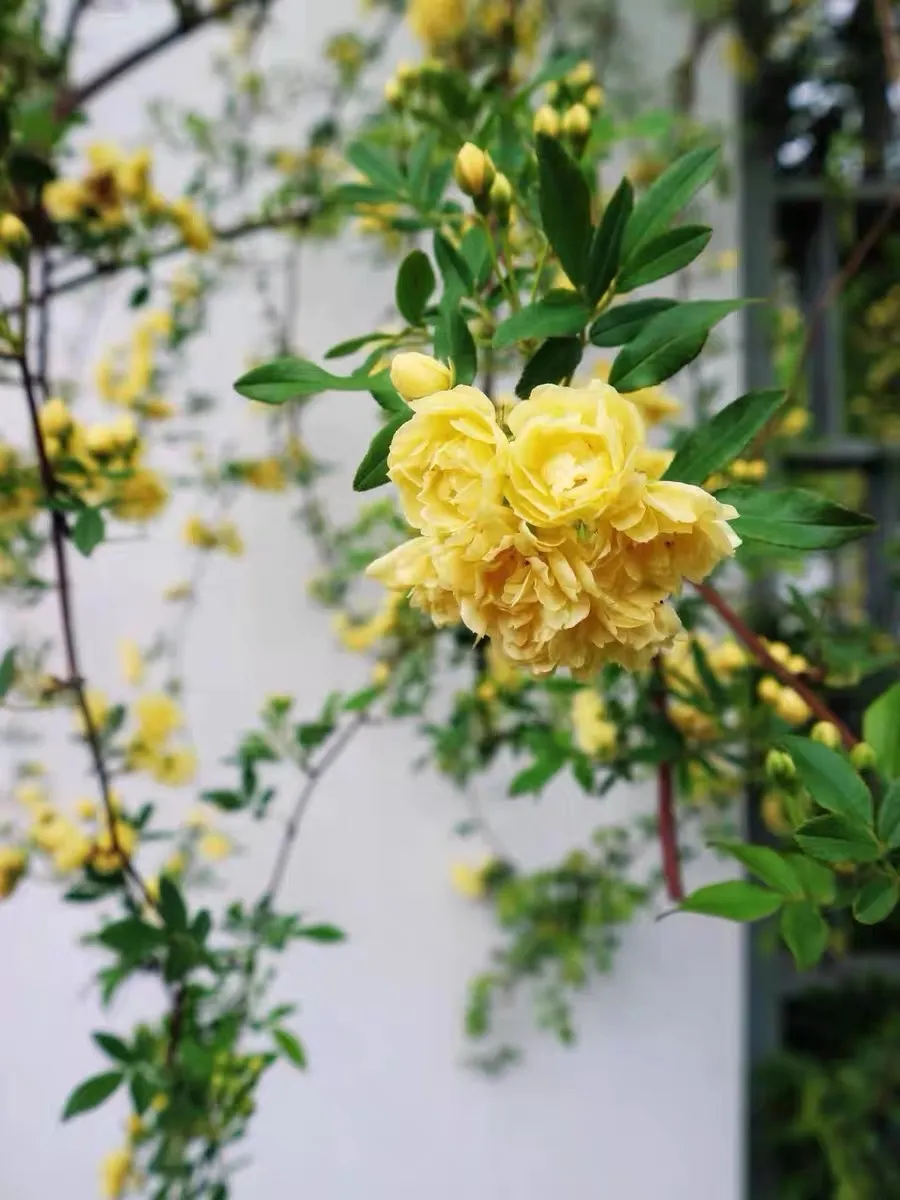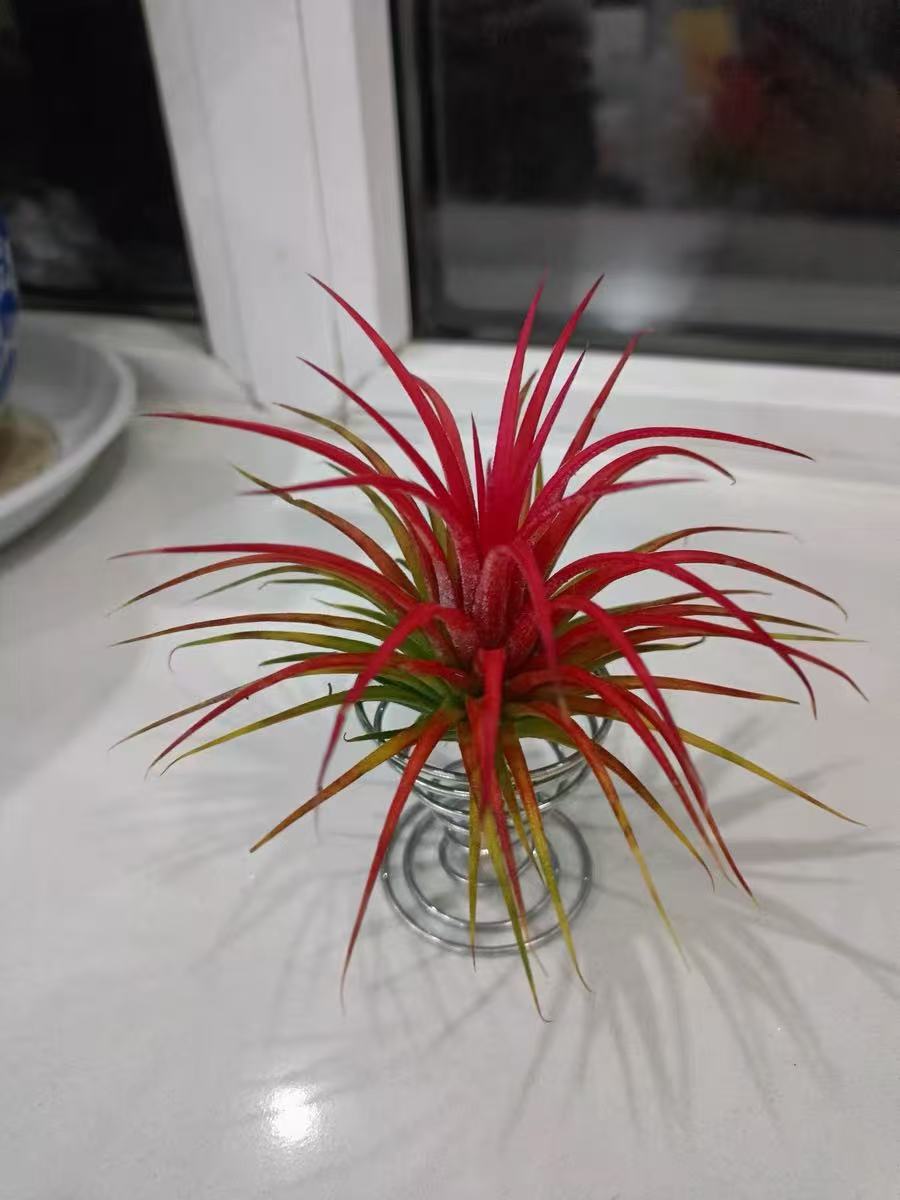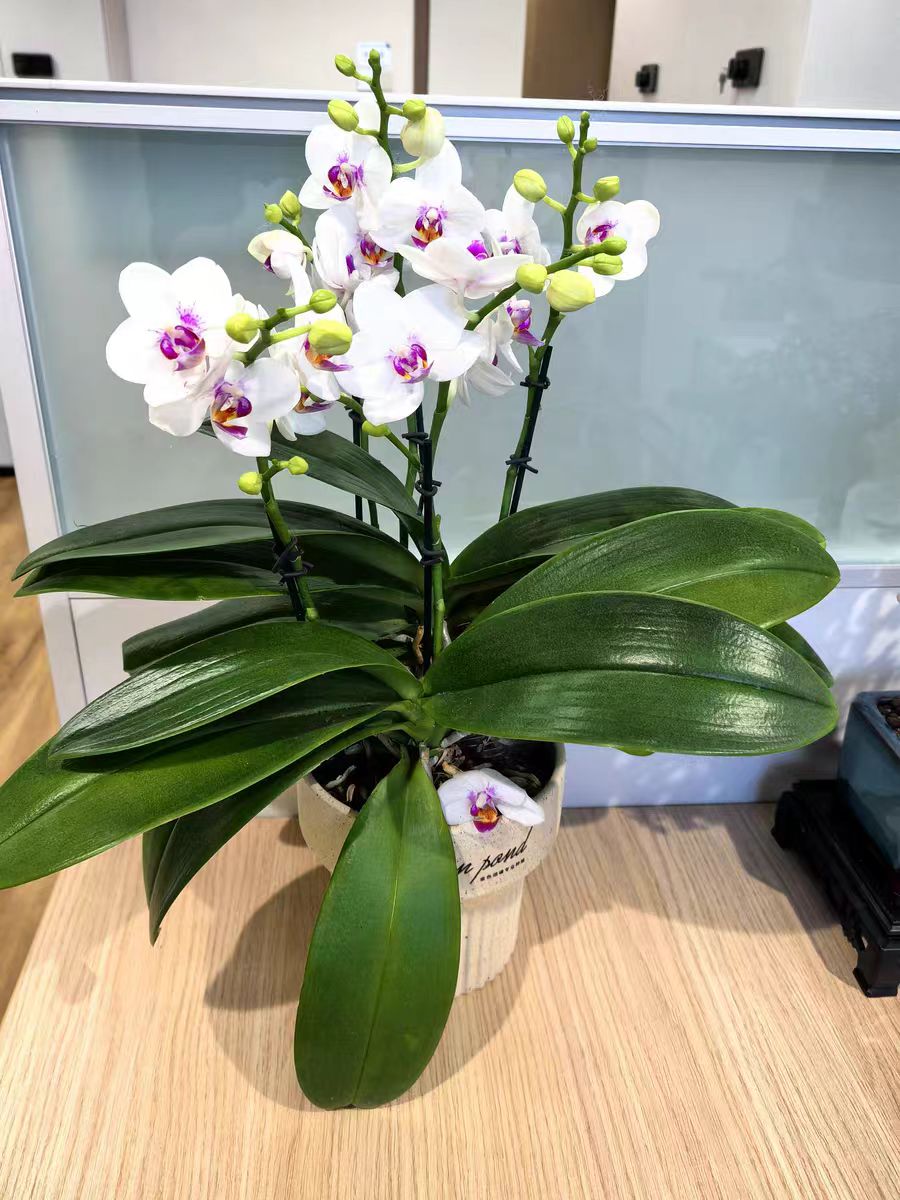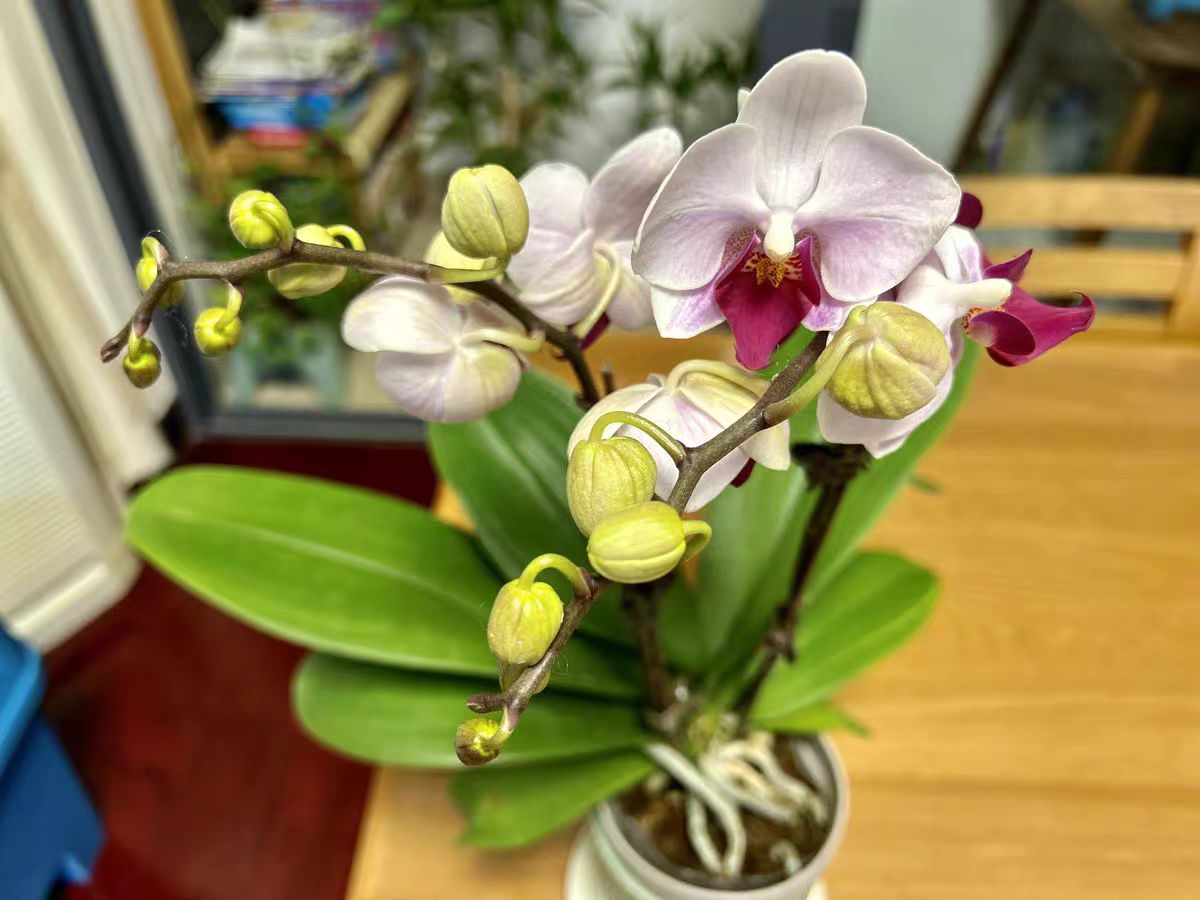The yellow banksia rose is a semi - evergreen climbing shrub of the genus Rosa in the Rosaceae family. Its flowering period is from April to May. At that time, the whole tree is covered with blooming flowers. The flowers are small and delicate, and the petals shine with a golden yellow light. When a gentle breeze blows, the flower branches sway gracefully, and the fragrance spreads, which is fresh, elegant and intoxicating.
The flower language of the yellow banksia rose is "the heart's belonging, willing to be a captive", symbolizing that in the deep affection of love, friendship and family, people are willing to offer their sincere hearts, devote themselves wholeheartedly and without reservation. This meaning makes it a carrier of emotions. Giving it to someone cherished can implicitly express the deep affection in the heart.
As a semi - evergreen plant, the yellow banksia rose still keeps its leaves green in winter. In places with a mild climate, its leaves are green all year round, adding a touch of vitality to winter. Even in cold regions, although some leaves will wither and fall, some still remain, demonstrating tenacious vitality.
For the maintenance of the yellow banksia rose, light is of great importance. It loves sunlight and should be planted in a sunny place with at least 6 hours of sunlight per day. Insufficient light can lead to slender branches and reduced flowering. However, in high - temperature summers, it needs to be shaded appropriately to prevent the leaves from being burned by strong light.
The yellow banksia rose likes a moist environment but avoids waterlogging. Watering should follow the principle of "alternating dry and wet". During the vigorous growth period and flowering period in spring, the water demand is high, and it can be watered once every 2 - 3 days. In summer, due to rapid water evaporation, it needs to be watered once in the morning and once in the evening. In autumn and winter, as the temperature drops, the frequency of watering should be reduced, and the soil should be kept slightly moist.
In terms of fertilization, the yellow banksia rose grows rapidly and blooms profusely, so it has a relatively high demand for fertilizers. Before the buds sprout in spring, a thin liquid fertilizer mainly composed of nitrogen can be applied to promote the growth of branches and leaves. Before the flowering period, phosphorus and potassium fertilizers should be increased, such as potassium dihydrogen phosphate solution, which can be applied once every 10 - 15 days to help with flower bud differentiation, increase the number of flowers and enhance the flower color. After flowering, a compound fertilizer should be applied to replenish the nutrients consumed during flowering. In winter, a decomposed organic fertilizer such as manure or compost can be applied to lay a solid foundation for the growth in the coming year.
Pruning is also an essential part of maintaining the yellow banksia rose. After flowering, the withered flowers, dead branches and diseased branches should be pruned in a timely manner to avoid wasting nutrients. In winter, heavy pruning is required. Over - dense branches should be thinned out, and strong main branches should be retained to promote the germination of new branches in the coming year.
The yellow banksia rose is vulnerable to diseases such as powdery mildew and black spot. Fungicides such as carbendazim and chlorothalonil can be used for prevention and treatment. For pests such as aphids and red spider mites, pesticides such as imidacloprid and abamectin can be used for elimination. In daily maintenance, maintaining good ventilation and sufficient light can effectively enhance the plant's resistance. As long as these maintenance points are mastered, the yellow banksia rose will surely bloom its most charming charm in the courtyard.
When does the yellow banksia rose bloom?

Share with
Tagged in :




Leave a Reply